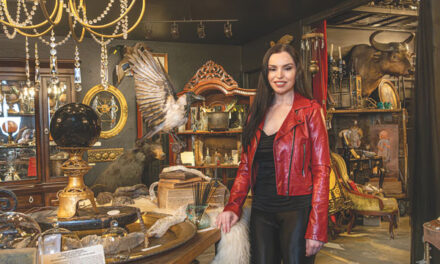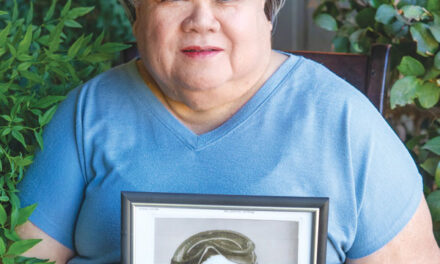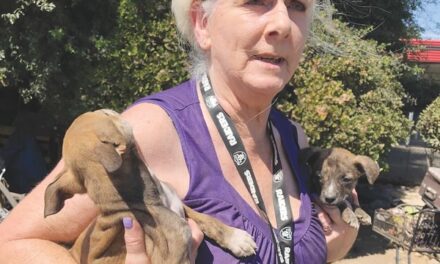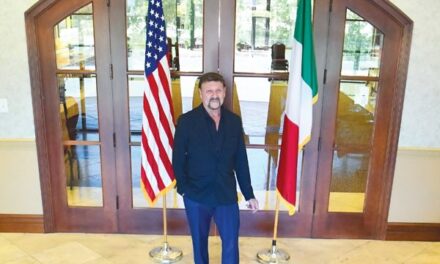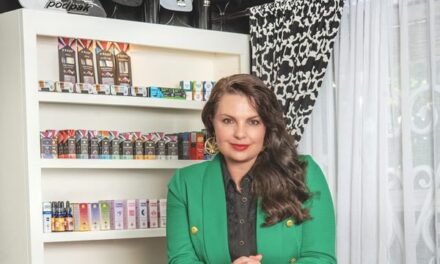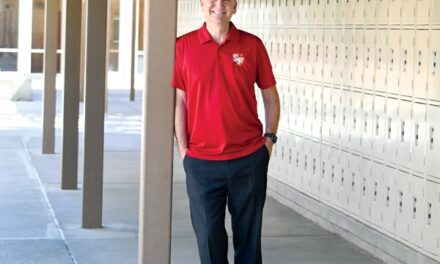A Place to Nest
Local woman credited with bringing back the bluebird
By Mary Lynne Vellinga
November 2020
In this grim season of infection and lockdown, the resurgence of the western bluebird in Sacramento recently popped up as a bright thread on the social media site Nextdoor, where the chatter usually features more downbeat concerns like porch theft or the growing number of people living on sidewalks and in parks.
It’s hard not to notice the bluebird, which suddenly seems everywhere in this capital city. The males are vivid flashes of blue and rusty orange as they swoop and dart, chasing insects along golf fairways and expanses of grass. Bluebirds perch on street signs, venture up on porches and hop along the ground.
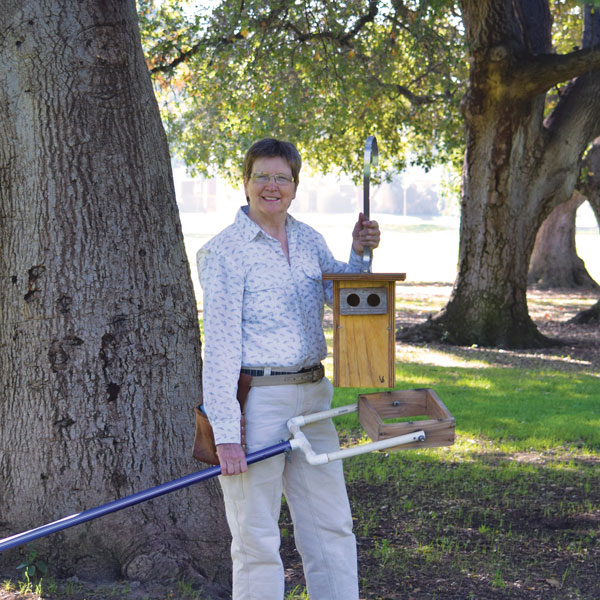
Like many native bird species, bluebirds fell into serious decline in the 1950s and ‘60s due to the pesticide DDT, loss of nesting habitat and competition from non-native species. Until recently they were seldom seen in core Sacramento neighborhoods, whose stately trees and ample parks would seem to provide ideal habitat.
Now they are ubiquitous. What makes their comeback in Sacramento all the more remarkable is that it was engineered by a single bird enthusiast. Vicki Butler is a retired water treatment plant manager who lives in South Land Park. She is one of hundreds of volunteers around the country who are devoted to saving the bluebird by erecting “trails” of nest boxes where the birds can raise their broods with some protection from mortal enemies: aggressive, non-native interlopers like starlings and house sparrows that outcompete them for the limited inventory of tree cavities in which they nest.
Bluebirds, it turns out, have lots of fans. They are mild mannered and pretty. Their soft, stuttering song is not harsh like the calls of the West’s other signature blue bird, the domineering scrub jay, which incidentally will peck baby bluebirds to death and eat them if given a chance. Male bluebirds are good dads. Vicki Butler has seen them give their fledglings flying lessons.
“There are lots of people who are pretty obsessed with bluebirds,” Butler says. “They are such a sweet bird. There is nothing annoying about them at all.”
On the question of the bluebird’s local recovery, Butler offers, “I’ve fledged hundreds of birds in my boxes. The key is nesting availability. We’ve got lots of good habitat, parks and especially golf courses.”
Vicki Butler has been hanging bluebird boxes in trees at Sacramento parks and golf courses for at least a dozen years. For a while, she even banded the fledglings so she could track their progress as they spread out at a rate of about 3 miles a year, turning up in one park after another.
Butler keeps meticulous track of what’s happening in her boxes, checking them each week to see how the bluebird broods are progressing. This year, she has counted 81 birds that fledged from 18 boxes she maintains on two Sacramento golf courses, Bing Maloney and Land Park. She also maintains boxes at Haggin Oaks golf course and McKinley Park.
“People will walk past my bluebird boxes and never see them because they’re up in the trees anywhere from 10 to 18 feet,” Butler says. Bluebird boxes erected on poles just invite vandalism, she adds.
Butler’s boxes are designed to maximize the bluebird’s chances. The holes are too small for starlings to get inside. While there isn’t a way to create a hole that would let a bluebird in and keep a house sparrow out, Butler includes a second hole so adult bluebirds have an escape hatch if a sparrow shows up and starts attacking them and their babies to take possession of the box.
Butler positions her boxes in groves away from snack bars and other places where people congregate and eat, because that’s where house sparrows hang out. If sparrows do show up, she traps them and disposes of them in a way she does not detail.
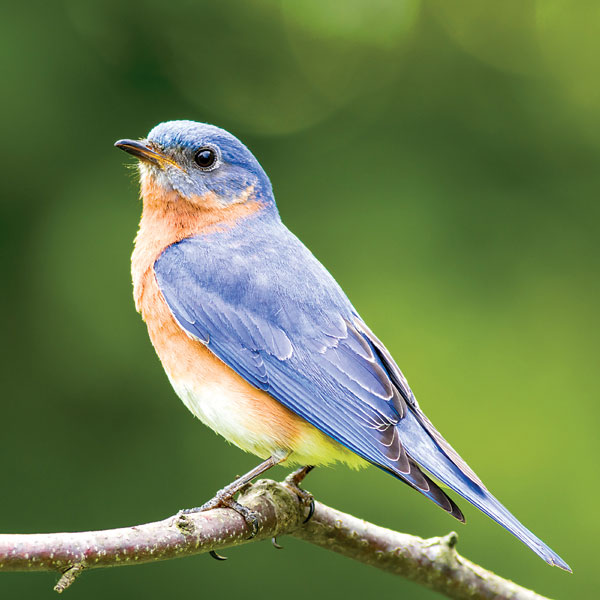
One hot Sunday in late July at the Land Park golf course, Butler brought down a box. She found four baby bluebirds nestled inside, their yellow beaks craning and their black eyes wide open. They were the second brood of the year. Their siblings from the first brood had already fledged and could be seen flitting in the trees nearby.
“This is probably the last brood I’ll have going this year.” The babies were 13 days old, the latest Butler can safely open a box to check on them. All told, they’ll spend 21 days inside the box before fledging.
Bluebirds live about three to four years. They generally produce two broods, one in spring and one in summer, for a total of 10 to 12 offspring.
Vicki Butler is one of 170 or so Californians monitoring bluebird boxes around the state and reporting their results annually to the California Bluebird Recovery Program, created by a group of volunteers in 1994. Last year, the group reported that 21,164 baby bluebirds had fledged from their boxes, compared with 5,077 in 1996.
But their recovery is tenuous. Insecticides continue to pose a threat and bluebirds are heavily dependent on an aging group of volunteers who dedicate their time to erect and monitor nest boxes.
“I’ve not been as good as I should be about training other people,” Butler allows. “I’m sort of doing what I can at this time, but there’s plenty of opportunity for other people to put up boxes and monitor them.”
For information on how to build and monitor nest boxes, visit the North American Bluebird Society website at nabluebirdsociety.org.
Mary Lynne Vellinga lives in Land Park. She can be reached at mlvellinga@sbcglobal.net.




